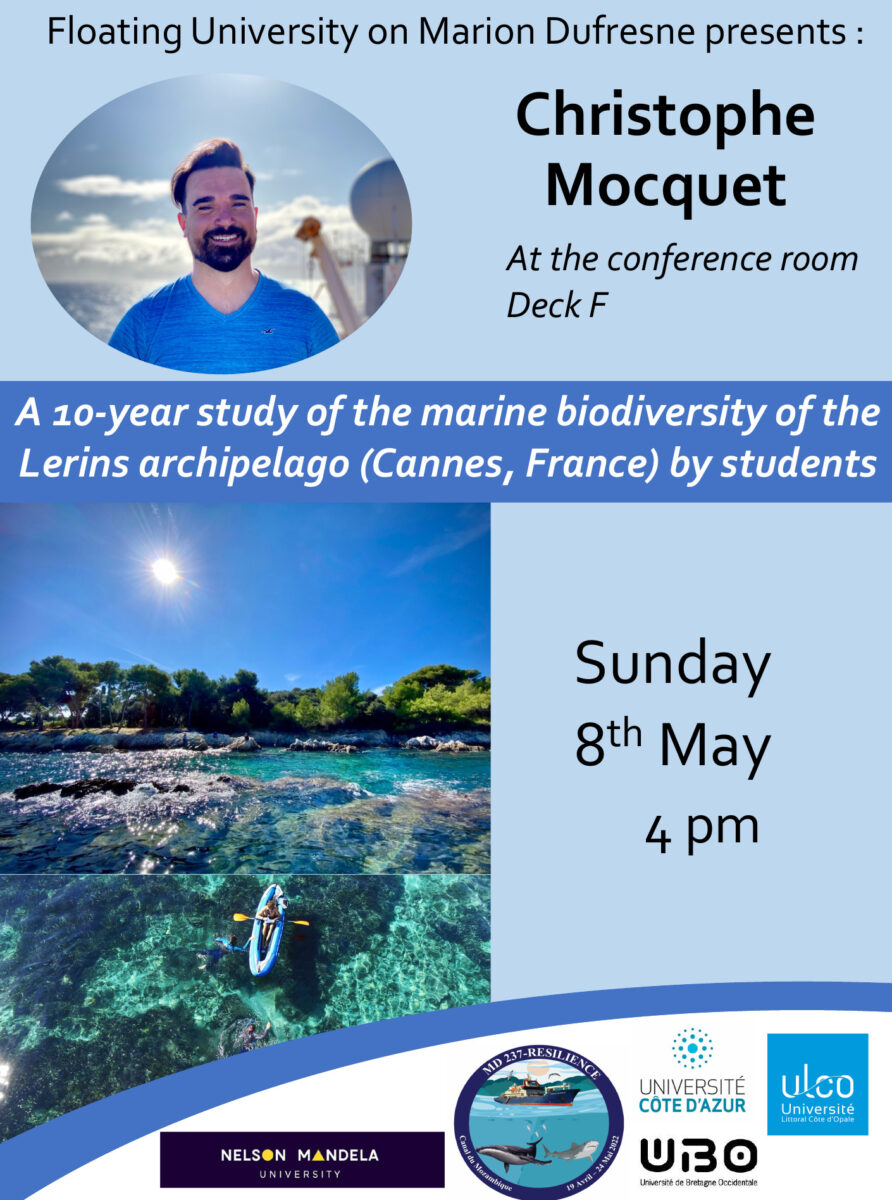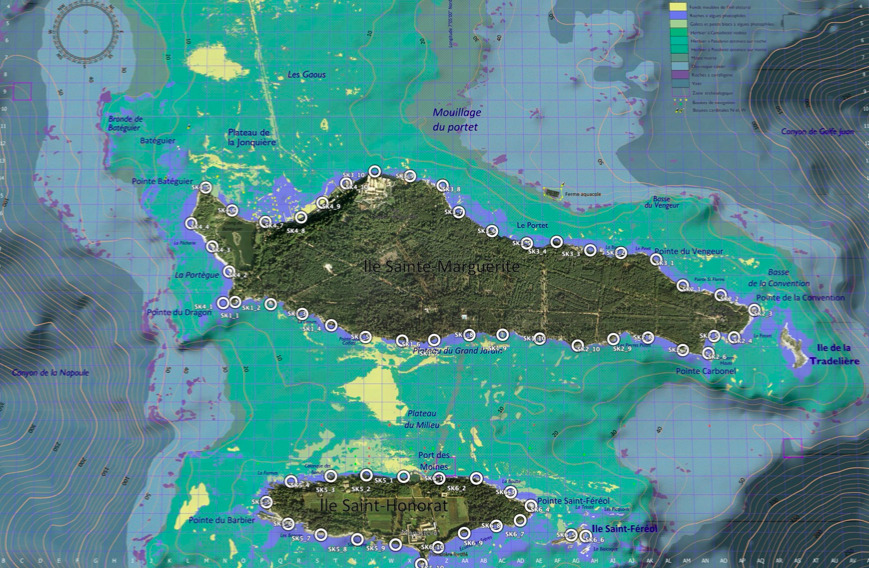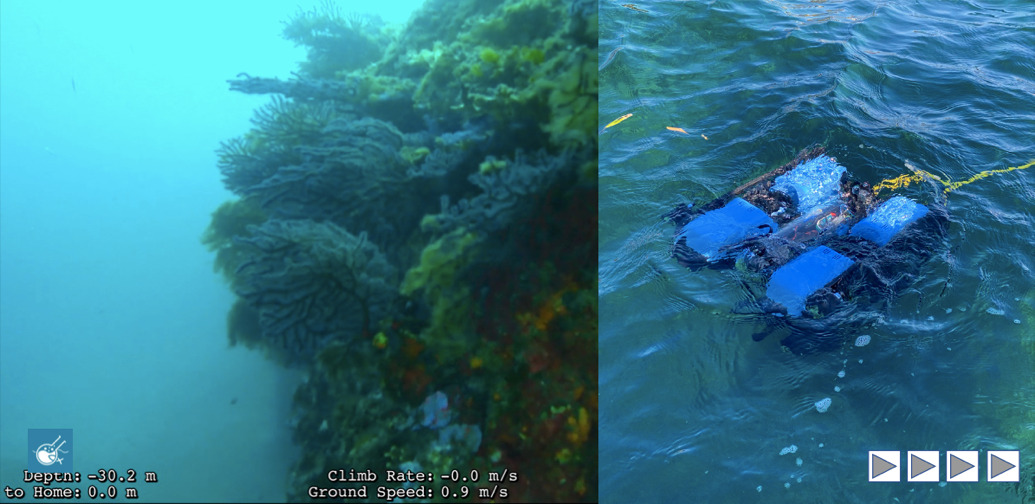Conference by Christophe Mocquet – A 10-year study of the marine biodiversity of the Lerins archipelago (Cannes, France) by students

May 8th, 2022, R/V Marion Dufresne, Mozambique Channel
Authors: Ioannis Kalaitzakis & Salomé Pellé

Chrstophe Mocquet is the program director of the MARRES interdisciplinary international program at the University Cote d’Azur in Nice (France). During his seminar on board of the Marion Dufresne he talked us about a student sampling expedition on Lerins Islands occurring annually since 10 years within the MARRES program.

First year MARRES students go to the field trip every year and are mentored by the second-year students. The project “Lerins Biodiversity” is a 10-year study of marine biodiversity at the islands Sainte Marguerite and Saint Honorat (right figure) located less than 1 km from Cannes. The aim of this field trip is to collect data in order to get familiar with statistical methods. These islands are under Natura 2000 regulations as they feature Mediterranean coastal biodiversity. They are characterized by wide range of ecosystems such as rocky or sand bottoms, pebbles, Posidonia, and coralligenous environments at greater depths.
Every year, the students cover 60 stations by forming different teams (figure below). The sampling is performed using kayaks and doing transects, with 2 people in the water counting all the features and species present, and one person in the kayak writing down the data (figure below).


The data collected is then analyzed by the students with the help of the professors. Some species were found to be very abundant such as wrasses which are long, colorfoul and carnivorous fish but also different species of breams. Different reasons could explain the differences found in the collected data. As for instance, the species richness seemed to be higher at Saint Honorat which is located in the south, far from Cannes and it has less anthropogenic impact. This smaller island is mainly composed of rocky substrates and has more algae, which seems to provide both food and shelter for marine species. Furthermore, some species can serve as indicators of ecosystem health such as the non-native ornate wrasse, which is an indicator of warming waters.
The students also try to collect anthropogenic disturbance data, such as the impact of mooring on Posidonia or the presence of aquaculture farms on nearby ecosystems, and analyse them in relation to the observed biodiversity. Furthermore, in order to study ecosystem out of reach, a remote sampling device was used to get footage of deeper ecosystems like the coralligenous environments.

Remote sampling device
This project is a great way for students to get to know Mediterranean biodiversity and ecosystems and collect their own data for statistical analysis. Additionally, they get to interpret the data and put it into context, which creates a long-term dataset on these 2 islands that are not quite know or studied.
 Attention, vous utilisez un navigateur peu sûr !
Attention, vous utilisez un navigateur peu sûr !